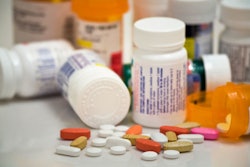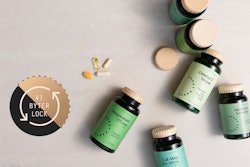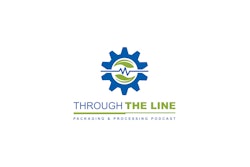The U.S. Food and Drug Administration today alerted health care professionals to a change in heparin manufacturing that is expected to decrease the potency of the common anti-clotting drug.
To ensure the quality of heparin and to guard against potential contamination, the United States Pharmacopeia (USP), a nonprofit standards-setting organization, adopted new manufacturing controls for heparin. These changes include a modification of the reference standard for the drug's unit dose.
Manufacturers in the United States label the amount of heparin included in their products based on USP standards. The changes adopted by the USP for the heparin unit dose match the World Health Organization's International Standard (IS) unit dose definition that has been in use in Europe for many years. The revised USP reference standard and unit definition for heparin is about 10 percent less potent than the former USP unit.
A unit is the measure of a drug's activity in the body. For heparin, a unit dose is the measure of the drug's ability to block the blood's natural clotting ability (anticoagulation). Heparin's potency is determined by the dose of the drug required to produce a specific level of anticoagulation.
Manufacturers for the U.S. market have begun to make heparin using the new USP standard. While the USP manufacturing controls take effect Oct. 1 for production, the FDA has asked that they not ship this new product to customers until Oct. 8, 2009, or later. The delay will give health care providers and facilities time to learn about the changes and to make adjustments to their pharmacy procedures and dosing practices, according to John Jenkins, M.D. director of the Office of New Drugs in the FDA's Center for Drug Evaluation and Research.
“Although the FDA-approved labeling for heparin has not changed, including the recommended doses, it is essential that health care professionals be aware of the potential difference in potency between the old and new vials of heparin when administering the drug,” said Jenkins.
Four companies market heparin in the United States. APP, the largest manufacturer, markets heparin in vials; Hospira markets heparin in intravenous bags, vials, and syringes; Baxter markets heparin in intravenous bags, and B. Braun markets heparin in intravenous bags. The FDA has asked that all manufacturers identify their new products to help pharmacies and health care professionals differentiate it from the former product.
Prescription and over-the-counter medicines available in the United States must generally meet USP's public standards, when such standards exist. The revised standards for heparin are contained in a new USP monograph.
The monograph was revised, in part, in response to a 2007- 2008 incident of heparin contamination involving a manufacturing step in China. The contaminated heparin was associated with deaths and other adverse events in the United States. The monograph was changed to include a test for the contaminant.
To ensure the quality of heparin and to guard against potential contamination, the United States Pharmacopeia (USP), a nonprofit standards-setting organization, adopted new manufacturing controls for heparin. These changes include a modification of the reference standard for the drug's unit dose.
Manufacturers in the United States label the amount of heparin included in their products based on USP standards. The changes adopted by the USP for the heparin unit dose match the World Health Organization's International Standard (IS) unit dose definition that has been in use in Europe for many years. The revised USP reference standard and unit definition for heparin is about 10 percent less potent than the former USP unit.
A unit is the measure of a drug's activity in the body. For heparin, a unit dose is the measure of the drug's ability to block the blood's natural clotting ability (anticoagulation). Heparin's potency is determined by the dose of the drug required to produce a specific level of anticoagulation.
Manufacturers for the U.S. market have begun to make heparin using the new USP standard. While the USP manufacturing controls take effect Oct. 1 for production, the FDA has asked that they not ship this new product to customers until Oct. 8, 2009, or later. The delay will give health care providers and facilities time to learn about the changes and to make adjustments to their pharmacy procedures and dosing practices, according to John Jenkins, M.D. director of the Office of New Drugs in the FDA's Center for Drug Evaluation and Research.
“Although the FDA-approved labeling for heparin has not changed, including the recommended doses, it is essential that health care professionals be aware of the potential difference in potency between the old and new vials of heparin when administering the drug,” said Jenkins.
Four companies market heparin in the United States. APP, the largest manufacturer, markets heparin in vials; Hospira markets heparin in intravenous bags, vials, and syringes; Baxter markets heparin in intravenous bags, and B. Braun markets heparin in intravenous bags. The FDA has asked that all manufacturers identify their new products to help pharmacies and health care professionals differentiate it from the former product.
Prescription and over-the-counter medicines available in the United States must generally meet USP's public standards, when such standards exist. The revised standards for heparin are contained in a new USP monograph.
The monograph was revised, in part, in response to a 2007- 2008 incident of heparin contamination involving a manufacturing step in China. The contaminated heparin was associated with deaths and other adverse events in the United States. The monograph was changed to include a test for the contaminant.






















